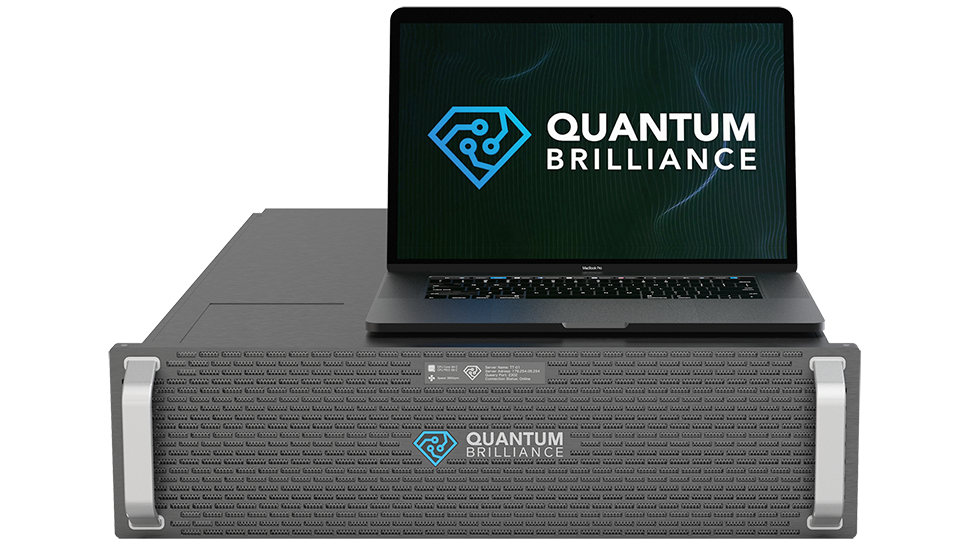Advancements in Quantum Computing: The Role of Diamond-Based QPUs
Introduction to Quantum Brilliance
Quantum Brilliance, an innovative firm based in Germany and Australia, is pioneering the development of portable quantum computers that utilize diamond-based quantum processing units (QPUs). These groundbreaking devices are engineered to function at ambient temperatures and hold the potential to be integrated with traditional GPUs and high-performance CPUs in environments ranging from data centers to vehicles. However, the journey towards realizing this vision is fraught with both technical challenges and commercial considerations.
The Significance of Diamonds in Quantum Technology
In recent years, diamonds have garnered attention as crucial materials in the realm of quantum technologies due to their unique atomic characteristics. Researchers have dedicated substantial effort towards engineering high-purity synthetic diamonds to mitigate interference from impurities. A significant breakthrough occurred in 2022 when a Japanese jewelry company collaborated with academic institutions to devise a method for creating ultra-pure two-inch diamond wafers.
In a notable development in 2023, Amazon entered this domain by collaborating with De Beers’ Element Six at its Center for Quantum Networking to cultivate lab-manufactured diamonds intended for quantum communication systems. Quantum Brilliance is leveraging nitrogen vacancies within these diamonds to create qubits, representing a compact and energy-efficient alternative to conventional cryogenic quantum setups.
A Shift in Quantum Computing Approach
Andrew Dunn, the Chief Operating Officer of Quantum Brilliance, emphasizes a shift away from the prevailing paradigm of developing systems with millions of qubits—an approach that tends to be costly and energy-intensive. Instead, the focus is on achieving practical and cost-effective applications. "We aim to understand the implementation of 100 qubits in a vehicle in a simple and economical way," Dunn explains, highlighting different expectations for real-world use cases.
This perspective diverges from the industry’s general ambition of vast qubit counts in quantum systems, where Quantum Brilliance desires to offer viable solutions primarily in areas such as AI inference and sparse data analysis.
Collaboration with Research Institutions
Quantum Brilliance is already collaborating with notable research organizations, including the Fraunhofer Institute for Applied Solid State Physics (IAF). The IAF is currently testing the company’s second-generation Quantum Development Kit, known as QB-QDK2.0, which integrates classical processors—such as Nvidia GPUs and CPUs—with the QPU into a cohesive unit. This innovative architecture promises to streamline processes and enhance performance.
In addition, Oak Ridge National Laboratory in the United States has procured three systems from Quantum Brilliance to explore scalability and parallel processing, particularly concerning applications like molecular modeling. Dunn notes the purpose behind acquiring multiple systems is to investigate how to effectively distribute processing tasks, enhancing overall efficiency.
Integration with Chip Manufacturing
Quantum Brilliance is actively collaborating with imec, a research and innovation hub, to incorporate diamond processes into existing chip manufacturing methodologies. This initiative could bridge the gap between cutting-edge quantum technologies and traditional semiconductor processes, a crucial step in their adoption across various industries.
Beyond computational capabilities, Quantum Brilliance envisions potential applications in quantum sensing technologies. This versatility may enable the repurposing of quantum technologies for defense and industrial sensor applications, expanding the scope of quantum innovations.
The Future of Quantum Computing
The ultimate ambition of Quantum Brilliance is to make quantum computing as commonplace as any other chip utilized in a server. Dunn articulates this vision succinctly, stating, "I want to make quantum technology unobtrusive and mundane, functioning like any standard chip." The overarching goal is to integrate quantum computing into everyday technology seamlessly.
Conclusion
Quantum Brilliance stands at the frontier of transforming quantum computing through its diamond-based QPUs, promising enhanced functionality at room temperature. By addressing practical use cases and collaborating with research institutions, the company aims to make quantum technology accessible and efficient. As development continues, it will be fascinating to observe how these innovations will reshape both computing and various industries in the years to come.




